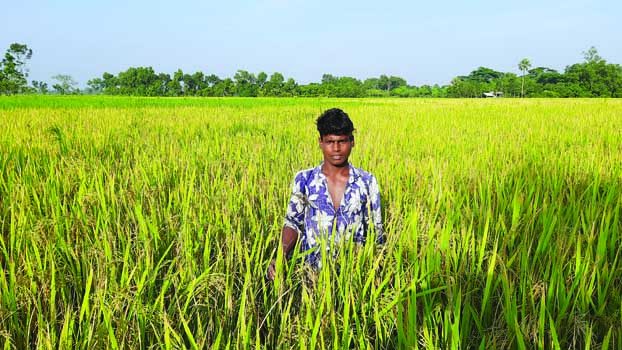Govt incentives double Aush cultivation in Satkhira

Due to the govt incentives, the cultivation and production of Aush paddy has increased in Satkhira and farmers have also got better prices of paddy this year.
Farmers of Satkhira region have started an agricultural revolution by cultivating Aush paddy in the period between the cultivation of Boro and Aman even in the midst of the disaster of corona epidemic.
Aush paddy has been planted on more land than the target this year. The yield of the hybrid Aush per hectare was 3.20 MT. District agriculture department said that 23,000 metric tons of Aush paddy has been produced in the district this season.
In most of the areas, farmers have grown Aush paddy and the farmers are happy to get Tk 16 to 17 hundred per kg. The government used to give agricultural incentives for Aush cultivation on all the lands which could not be brought under cultivation at one time. In a few years, the production of Aush in the district has doubled. In order to increase the cultivation of Aush, an agricultural incentive of Tk. 17 lakh was given to 2,000 farmers in the district this season.
Satkhira Department of Agriculture Extension told reporters that Aush paddy has been cultivated in 8,000 hectares of land in seven upazilas of Satkhira in the current 2020-21 season. The Agriculture officials further said that the planting of Aush will increase several times in a few years as underground water is not being uplifted.
The production cost of Aush is much lower than that of Boro. However, the farmers say that this success will not benefit the farmers if the government cannot build its own sphere of influence by breaking the syndicate. The cropping pattern of the region is changing as the two crop lands of paddy have been upgraded to three crops with the inclusion of Aush firming.
They further informed the reporter that in seven upazilas of Satkhira, in the current 2020-21 season, 2,000 Aush farmers were given 5 kg of seeds, 20 kg of DAP and 10 kg of MOP per person.
In Aush firming land cultivation, planting, irrigation, fertilizers and pesticides cost a maximum of Tk 6,000 per Bigha of land. Due to this, marginal farmers are also getting interested in Aush cultivation.
However, several farmers have complained that they are not getting government incentives. They claim that many people who have not cultivated Aush are also getting government seeds, fertilizers and cash.
It may be mentioned that the cultivation of Aush paddy is continuously increasing in Satkhira district and it has doubled in the last 10 years. In 2010-11, Aush was planted on 4,000 hectares of land in the district, in the current year 2020-21, 8,000 hectares of land has been planted.
Firoza Begum, wife of van puller Mofizul Islam of Kunduria village in Budhahata union of Asashuni upazila of Satkhira cultivated Aush paddy on 5 Bigha of land this season with agricultural incentives. Yield and price have doubled. She said she will get a good profit from this even excluding her expenses.
Satkhira Sadar Upazila Par Kukhrali village’s ideal farmer Md. Matiur Rahman has cultivated Aus paddy of Hybrid Shakti-2 and Jamaibabu variety on 12 Bigha of land this season. He said that with the help of the government, the production of Aush in the area will increase further.
Jahidul Islam, Deputy Assistant Agriculture Officer of Budhahata, said the planting of Aush paddy has gained popularity in the last few years. Due to good price of paddy in Boro season this year, farmers have planted extra Aush and got bumper yield.
Satkhira DAE Deputy Director Nurul Islam said the yield of Aush paddy in Satkhira has been better this season than other years. The cultivation of Aush has increased in the district as the government has given various incentives in agricultural equipment including seeds, fertilizers and irrigation to increase crop production.
He added that agronomists have developed many high-yielding varieties, which have also increased the average yield.
He said today's crop cutting shows that 18-19 mounds of paddy is being grown on per Bigha of land whereas earlier it was only 2-3 mounds. If the agricultural products of this country can be exported to the markets of developed countries including Europe and America, it is possible to earn a huge amount of foreign exchange. That is why the people concerned demanded to set up an agro processing center.




